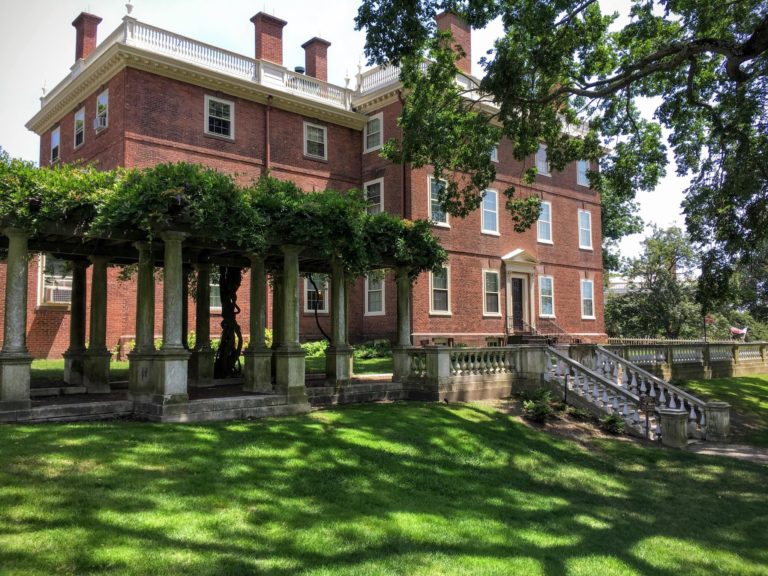About the Project

In 2022, the Rhode Island Historical Society (RIHS) will mark our 200th anniversary. We have been collecting, preserving and sharing Rhode Island’s stories since 1822, and we are committed to expanding access to collections and programs and broadening the scope of stories we tell. To recognize and celebrate this milestone, the staff and board have chosen to pursue a project that will not only benefit the organization but will also create an enduring and accessible spot for public engagement and enjoyment of our historic site’s built environment and landscape. After a thoughtful and thorough planning process, which began in 2017, the RIHS is excited to launch this project, which we are calling, “Putting Down Roots.”
RIHS has made a $105,000 investment in the infrastructure at the John Brown House

“Putting Down Roots” is a multifaceted program to stabilize our exterior infrastructure (historic retaining wall and fence), implement an environmentally-sensitive and interpretive landscape plan highlighting the original Olmsted design of the early 1900s, and increase ADA accessibility to both the greenspace and the John Brown House Museum, our flagship property and National Historic landmark.
The landscape surrounding the John Brown House Museum is central to our identity, and in the last decade, as the ancient elms have fallen victim to old age and Dutch Elm disease, this landscape has been in the press more than ever. Our Re-Visioning Committee consisted of seventeen stakeholders who are dedicated to the green infrastructure of our community, which included representatives from Brown University, the Rhode Island School of Design, the City Parks Department, the preservation community both public and private, and neighborhood leaders.
The research done by this group was used to prepare a new vision for this space made it clear that there was a bigger humanities story to tell using this landscape than we have ever done before. Combined with our desire to grow and provide better access to our outdoor programming that centers on music and history, our desire to share underappreciated stories in historic environments made this an ideal project to memorialize our 200th anniversary.
More than ever, the RIHS is dedicated to questions of sustainability, not only for the organization but for the community of which it is a part. For us, this means paying attention to our environmental footprint by doing things like adding a geothermal system at the 1788 John Brown House, minimizing our energy consumption, and attending to the health of our greenspaces. But what it also means is that, as a non-profit whose mission is not directly ecological, the steps we are taking are done with our bottom line in mind, as well.
